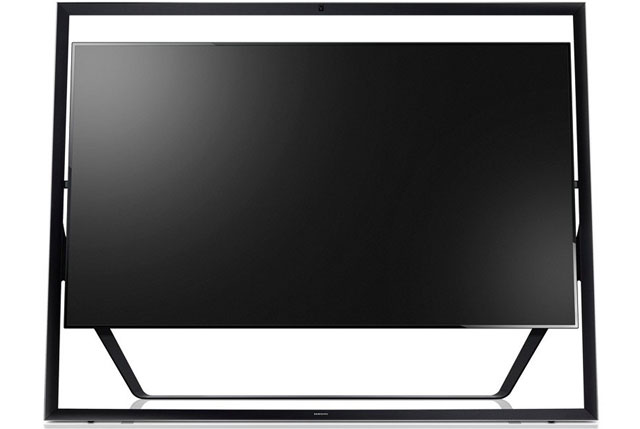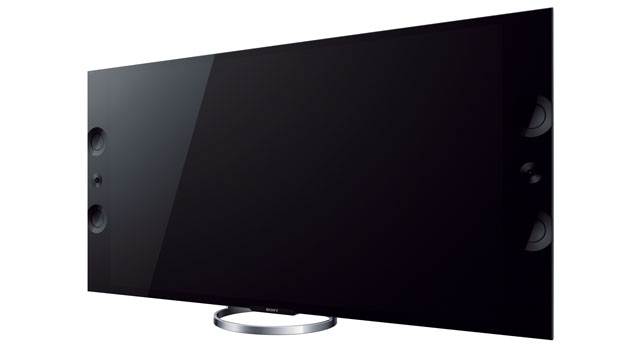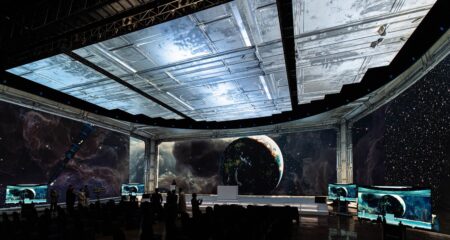
4K resolution television, which displays on-screen images four times as detailed as current-generation high-definition sets, is set to be the big emerging trend in television technology in 2013 judging by announcements at this week’s Consumer Electronics Show (CES) in Las Vegas.
Sony, Samsung Electronics and LG Electronics all announced large-screen TVs that use this new picture format, which is also known as ultra-high-definition (UHD), at the show.
Although CES officially kicks off only on Tuesday, the major consumer electronics firms showed off their latest and greatest technology at a series of press conferences in Las Vegas on Monday.
The key products on display — as is to be expected at an event that prides itself on its consumer focus — were smartphones and the new 4K televisions; as well as a range of connected devices.
Samsung announced several new TVs, including a new flagship top-end LED screen, the F8000, which comes in a range of sizes (46, 55, 60, 65 and 75 inches). These use voice recognition that can “acknowledge simply commands and understand natural language and full sentences,” said Tim Baxter, president of Samsung Electronics America.
A recommendation service, available only in the US because it links to electronic programming guides, offers suggestions of related TV shows to watch based on previous viewing patterns.
Samsung also showed off a 3D OLED (organic light-emitting diode) TV capable of displaying two shows at once, with each 3D headset’s built-in earbuds delivering the different soundtracks. This should solve many arguments, said Baxter.
The Korean company also revealed a whopping 110-inch TV during its slick press conference and announced its promised “Evolution Kit” – an easy-to-install hardware upgrade to its top-end TVs which increases the TV sets’ power and prolongs these expensive units’ lifespan by offering the latest technology.
Troubled Japanese consumer electronics giant Sony showed strong signs of recovery at a packed event at its stand in the cavernous halls of the Las Vegas Convention Centre.
Kazuo Hirai, the Japanese born but American-educated president and CEO of Sony, unveiled a number of significant products that seemed to indicate the company may be poised to return to its former glory.
Using an impressive multi-screen display that stretched 360 degrees around its massive stand, Hirai outlined the company’s new releases, including an awesome 56-inch OLED screen.
Having launched an impressive — and expensive (R279 000) 84-inch 4K television in 2012, Sony announced two smaller models at 55 and 65 inches as well as its first consumer 4K video camera.
Hirai also announced Sony’s new flagship smartphone, the 7,9mm-thick Xperia Z, which has a 13-megapixel camera, 5-inch full-HD screen, Snapdragon S4 processor and Mobile Bravia Engine 2. The phone is water resistant so it’s ideal for “blogging in the bathtub or downloading in a downpour”.
The phone has a large range of accessories that use near-field communications technology for one-touch sharing of content, especially music, and signals how Sony will be providing content-sharing across its connected smartphones, tablets and TVs, as well as many clever speakers.

One of the most impressive products is the Cyber-shot RX100, which Hirai later described as a “Ferrari engine in a Mini Cooper body”.
“We’re a year away from returning the TV business to profitability. You have to shrink to grow,” said the CEO, who took the reins from Howard Stringer nine months ago after the Japanese tsunami last year significantly set back its recovery attempts. “[Recovery is] a combination of reduction in costs and better products.”
Sony, which owns movie and TV studios as well as record labels, is pushing hard with 4K, and plans to offer a content service to US consumers from mid-2013. Previous HD films like Spider-man 3 and others will be remastered in this new format.
Chinese manufacturer Huawei — which is the second-largest maker of telecommunications equipment, including cellphone base stations — showed off two large-screen smartphones that are clearly aimed at Samsung and Apple devices.
The Ascend D2 and Mate devices look not unlike Samsung’s Galaxy S3 and Note 2 and have similarly sized big screens.
The D2 has a 6-inch screen, 13-megapixel camera and Huawei claims it has a significant battery life of two days. The Mate has a slightly larger screen.
To demonstrate its water-resistant feature, Huawei president Richard Hu poured a jug of water over the phone to a tsunami of flashlights and showed that the phone’s screen responds to a gloved hand.
Hu punted its design features, including a curved back to match the shape of your hand and said the phone is made using 116 different manufacturing processes.
A clever feature on both phones lets you reduce the size of the virtual keyboard so you can use only one hand.
CES continues this week.
- Toby Shapshak is editor of Stuff magazine




